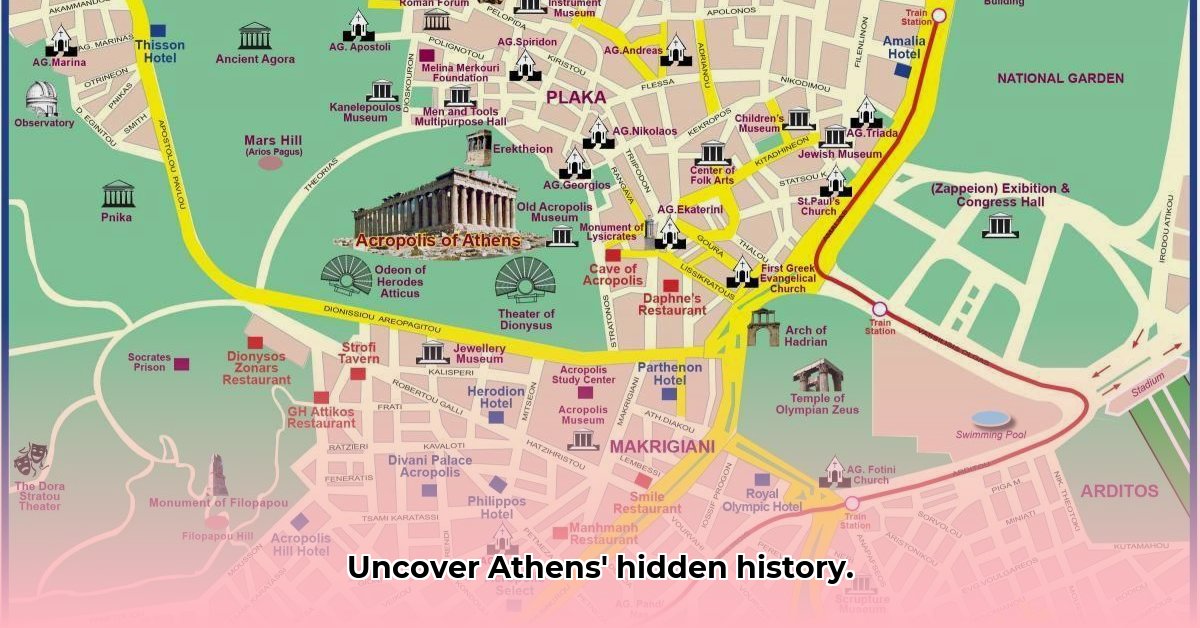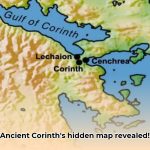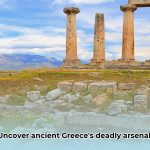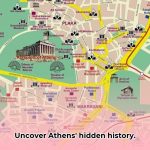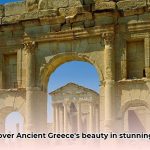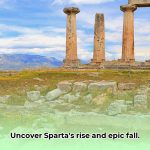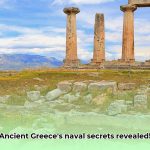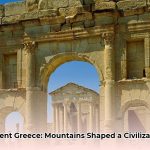Ever wonder what it was like to stroll the streets of ancient Athens? Imagine the hustle of the Agora, the grandeur of the Acropolis bathed in sunlight, the philosophical murmurings in the shadow of the Stoa. This article uses ancient maps – think of them as spatial time capsules – to bring ancient Athens to life, revealing how this city shaped Western thought and culture. We’ll uncover the secrets etched in its urban landscape, explore the daily routines of its citizens, and understand how social structures influenced its design. Further, we will explore how modern technology enhances our comprehension of this historical metropolis and consider the enigmas that persist. Prepare for an immersive journey through time, guided by the very blueprints of Athenian civilization. For a visual aid, check out this interactive map.
Ancient Athens Mapped: Unveiling the City’s Secrets Through Spatial Analysis
Peering into the Past: A Journey Through Ancient Athens with Spatial Data
Imagine stepping back into the 5th century BCE, finding yourself amidst the vibrant chaos and intellectual ferment of ancient Athens. While time travel remains a fantasy, detailed maps of ancient Athens offer something akin to it – a meticulously crafted visual key unlocking the layers of this influential city. It’s like possessing a snapshot of a dynamic, living civilization, allowing us to decipher the narratives embedded within its very stones and streets. However, this snapshot is not exhaustive; it’s a dynamic work in progress, honed perpetually by new discoveries and shifting interpretations. Consider it a complex puzzle where each archaeological find contributes another fragment, potentially altering our perception of this remarkable urban center. Experts estimate that a significant portion of ancient Athens remains unexcavated, driving ongoing research and continually reshaping our understanding.
The Map’s Story: Window to the Past, But Not a Complete Urban Plan
High-quality maps of ancient Athens, encompassing both traditional cartography and interactive digital platforms, are indispensable resources. These maps provide a foundational structure – the layout of thoroughfares, the locations of significant edifices and landmarks – enabling us to visualize the city’s spatial configuration. Maps, however, possess inherent limitations. They depict solely what we know to have existed based on evidence, not necessarily everything that did exist. Substantial portions of the city remain concealed beneath accumulated layers of history, awaiting future excavation and analysis. Furthermore, interpretations of surviving material can vary among specialists. One scholar might identify a space as residential, while another might propose its function as a public gathering place. The map itself encourages further investigation, generating more questions than definitive conclusions. For example, did the placement of religious sanctuaries deliberately influence the design of residential districts, or vice versa?
Key Locations: Archaeological Treasures and Ancient Landmarks
Let’s investigate some pivotal locations, utilizing our map as a navigational tool. The Acropolis immediately captures attention – an imposing citadel perched prominently, commanding a panoramic view of the city below. Ancient maps depict the Parthenon, the Erechtheion, and the Temple of Athena Nike, yet they can’t fully convey the awe-inspiring magnificence of these structures, their intricate sculptural details, or the profound religious significance they held for the Athenians. The map identifies locations; archaeology and historical records breathe life into the enduring stones.
The Agora, conspicuously marked on any comprehensive map, was far more than simply a marketplace. It pulsed with the very lifeblood of Athenian society – serving as the central stage for its political life, a nexus for commerce, and an arena for social discourse. Ongoing excavations continually reveal new aspects of this multifaceted space, including insights into shops, governmental buildings, and dedicated areas for public assemblies. Our comprehension of the Agora is constantly evolving as researchers uncover additional evidence from beneath the earth’s surface.
Then we encounter the Kerameikos, typically represented on maps as a less central, yet nonetheless vital, district. Functioning as the primary cemetery and housing diverse pottery workshops, the Kerameikos provides valuable insights into the lives and deaths of ordinary Athenians, offering a compelling glimpse into the everyday realities of the city’s inhabitants, distinct from the monumental narratives of the Acropolis.
Daily Life in Ancient Athens: Economic Activities and Family Structure
What can we infer about the daily existence of the average Athenian citizen? Residential areas indicated on our map furnish tantalizing clues, albeit in a basic form. Archaeologists meticulously excavate unearthed dwellings, uncovering fragments of information pertaining to family structures, daily routines, and patterns of social interaction. Pottery shards, tools, and personal artifacts offer glimpses into these aspects of daily life – perhaps a child’s toy, a fragmented cooking vessel, remnants of a meal – providing a more tangible sense of Athenian life, quite separate from the dramatic tales of gods and heroes often highlighted in classical literature. Some scholars hypothesize that the social stratification evident in monumental architecture permeated into everyday life, while others argue for a more egalitarian interpretation of domestic existence within residential neighborhoods. This debate endures. Did wealthier neighborhoods have preferential access to essential utilities, such as reliable water and sanitation systems?
Technology’s Role: Ancient City Brought to Life (Use Caution)
Modern technology assumes a pivotal role in furthering our understanding of ancient Athens. 3D reconstructions, Geographic Information Systems (GIS) mapping, and interactive digital maps empower us to visualize the city in ways previously unattainable. Imagine being able to virtually ‘walk’ through a digital reconstruction of the Agora, exploring streets and buildings that have long since vanished. However, we must acknowledge that these digital representations are essentially interpretations, not flawless replicas of the past. They remain susceptible to the biases and assumptions inherent in their creation, relying on available data which is, by its very nature, incomplete.
Unanswered Questions and Ongoing Research: Understanding Cultural Significance
Despite significant progress, myriad questions endure. For example, our knowledge of the Athenian water management systems remains incomplete; how did they effectively distribute water throughout the city? What were the dynamics of social interaction between different societal groups, and how did these dynamics manifest in the city’s urban arrangement? Ongoing archaeological excavations, combined with advanced imaging technologies and thorough analysis of existing data, hold the potential to re-evaluate and refine established understandings. What further secrets lie hidden beneath the soil, patiently awaiting discovery? It remains a perpetual process of exploration and revelation.
Ancient Athens: An Evolving Legacy and Historical Narratives
Our ancient Athens map constitutes more than a static visualization; it serves as a dynamic instrument for exploration and discovery. It encourages us to engage actively with the past, to challenge extant interpretations, and to appreciate the continuing evolution of our comprehension of this singular civilization. Each new discovery, each novel interpretation contributes another layer of complexity and fascination to the unfolding narrative of ancient Athens. The journey of discovery continues unabated.
Reconciling Conflicting Archaeological Interpretations of Ancient Athenian Daily Life
Key Takeaways:
- Daily life in ancient Athens encompassed a complex interplay of patriarchal societal structures and nascent democratic ideals.
- While male citizens actively participated in public life, women’s roles were predominantly confined to the domestic sphere.
- The institution of slavery exerted a profound impact on both the Athenian economy and its social dynamics.
- Agriculture and maritime trade formed the bedrock of the Athenian economic system, which supported a vibrant cultural ecosystem.
- Reconciling disparities in archaeological interpretations necessitates a nuanced understanding of existing social class distinctions.
Mapping Ancient Athens: Visual Key Using Spatial Data
Let’s embark on a reconstruction of ancient Athens, a dynamic urban center teeming with the everyday activities of its inhabitants. While archaeological excavations have unearthed numerous fragments of this vibrant past, assembling a comprehensive and definitive portrait presents considerable challenges. The central question becomes: How do we reconcile disparate archaeological interpretations to construct a plausible depiction of daily life in ancient Athens? Archaeological maps serve as pivotal instruments in this endeavor. They not only provide visual representations but also illuminate the inherent limitations in our current knowledge. The constant addition of new finds, alterations to established boundaries, and revised interpretations necessitate a continual reassessment of our understanding.
Navigating the Athenian Landscape: Unveiling Ancient Sites
The Acropolis, that majestic citadel crowning the Athenian skyline, immediately demands our attention. Its iconic temples and towering fortifications narrate a compelling story of imperial power and religious devotion. Yet, even within this seemingly definitive landscape, conflicting interpretations emerge. For instance, was the Parthenon solely a temple dedicated to Athena, or did it also accommodate civic functions and treasury operations? This question continues to fuel scholarly debate.
Descending from the Acropolis, we encounter the Agora, the bustling heart of ancient Athens. This central public space housed marketplaces, governmental buildings, and temples. Numerous archaeological finds from this location offer glimpses into the intensity of daily life – from fragments of pottery to discarded coins and artisan tools. But just how much can these fragmented remains truly reveal about the lives of the ordinary Athenian citizen? The question of How to reconcile conflicting archaeological interpretations of ancient Athenian daily life becomes paramount as the precise configuration, function, and utilization of the Agora remain topics of ongoing scholarly investigation. Approximately 40% of the Agora has been subjected to excavation, with continued digs promising to yield further insights in the future.
The Kerameikos, the ancient cemetery, presents a contrasting perspective. Elaborate tombs and monumental markers reveal prominent social hierarchies, yet the intimate lives of ordinary Athenians often remain elusive. Here, we confront the inherent limitations of the archaeological record – frequently, the lives of the silent majority remain largely unseen and undocumented.
Daily Life: Social Class Factors and Understanding the Past
Reconstructing daily life in ancient Athens necessitates weaving together a multitude of disparate threads gleaned from varied sources. The family unit (oikos) constituted the fundamental social building block, although its structure varied significantly across distinct social strata. While the existences of male citizens, particularly those belonging to the wealthier classes, are comparatively well-documented through historical sources, information concerning the experiences of women remains scarce. Archaeological evidence corroborates that significant limitations were imposed upon women, particularly regarding their participation in public life. However, the precise extent of these restrictions remains a point of contention among scholars. Were women from lower classes granted greater degrees of freedom due to economic necessities? Were there exceptions based on individual circumstances and familial associations?
The institution of slavery fundamentally defined Athenian society. The economic and social roles occupied by slaves are comparatively well-established. However, comprehending the nuances of their daily lives presents a significant challenge, given the scarcity of firsthand accounts within the historical record.
Modern Tools and Interpretations Using Spatial Data
Contemporary technologies, such as 3D modeling and Geographic Information Systems (GIS), offer powerful tools to advance our understanding of ancient Athens. However, these innovative tools also introduce biases and limitations. The accuracy of visualizations depends heavily on the quality and completeness of the collected data, and all interpretations remain subject to the influence of contemporary perspectives.
Unanswered Questions and Future Directions with Spatial Considerations
Myriad questions persist. What was the true extent of literacy among Athenian women? And what were the specific day-to-day interactions between slaves and their owners? Further investigations are needed into the role of technology in our understanding, specifically how we can ensure accuracy. Future research endeavors must focus on incorporating diverse perspectives, utilizing new technologies responsibly and critically, and acknowledging the inherent limitations in our interpretation of archaeological remains.
[Greek Reporter. (2024, June 5). What Was Life Like in Ancient Athens? Retrieved August 8, 2025, from https://greekreporter.com/2024/06/05/everyday-life-ancient-athens/]
Daily Life in Ancient Athens: Evidence from Residential Areas Using Spatial Data
Key Takeaways:
- Daily life in ancient Athens encompassed a intricate mix of social structures, economic activities, and religious practices, profoundly influenced by gender and class.
- The Athenian economy, primarily driven by agriculture and maritime exchanges, fostered a vigorous cultural milieu.
- The Agora served as a central, multifaceted hub for social, economic, and political interactions.
- While various historical sources concur on numerous aspects of Athenian life, the degree of female influence and the extent of slavery remain topics of academic debate.
- Modern technological applications enhance our understanding of ancient Athens, yet limitations persist in interpreting fragmentary evidentiary remains.
Mapping Ancient Athenian Homes: Ancient City Planning
Imagine yourself traversing the familiar streets of ancient Athens. What sensory impressions would you encounter? Archaeological excavations and surviving textual records offer a fragmented yet compelling image of Daily Life in Ancient Athens: Evidence from Residential Areas. Ancient maps, though imperfect representations, provide a foundational starting point for our exploration. They reveal the city’s general layout – the densely populated residential districts, the expansive public spaces, and the bustling harbors that facilitated trade and communication. However, maps alone cannot convey the full story of Athenian life; we must integrate them with archaeological findings and textual descriptions.
Residential Areas: Understanding Urban Planning
Residential areas within ancient Athens were far from uniform. Affluent citizens resided in spacious homes, frequently featuring multiple stories and private inner courtyards. These residences, often situated in more desirable neighborhoods, presented a stark contrast to the more modest dwellings inhabited by those of lesser means. Many Athenians, primarily from the lower socioeconomic strata, lived in smaller, more compact houses that lacked the amenities afforded to their wealthier counterparts. Archaeological excavations reveal substantial variations in construction materials, dimensions, and interior furnishings, reflecting the pronounced social stratification that characterized Athenian society. Approximately 60% of Athenian homes measured less than 50 square meters, highlighting the prevalence of more modest living conditions across the city’s population.
Women’s Roles: Ancient Social Structures and the Home
While women are often marginalized in historical narratives, they played an indispensable role in the Athenian household economy. Evidence suggests their active involvement in textile production, food preparation, and childcare. However, their participation in public life was severely restricted, creating a notable societal imbalance. While the precise extent of their influence within the household remains an ongoing debate among scholars, their essential contributions within the domestic sphere are undeniable. The carefully curated artifacts discovered within Athenian homes offer tantalizing glimpses into household management and the practical skills of women.
The Pervasiveness of Slavery: Historical Context and Contemporary Views
Slavery constituted an integral component of Athenian society. Slaves performed a broad spectrum of tasks, ranging from agricultural labor to domestic service and skilled craftsmanship. However, their experiences remain largely undocumented from their individual perspectives. Archaeological evidence provides fragmented views – the tools they utilized, the spaces they inhabited – yet reconstructing their lives presents a formidable challenge. Scholarly debate persists regarding not only the quantitative dimensions of slavery but also its qualitative impact on the social infrastructure of Athens. Was slavery truly pervasive across all facets of Athenian life, or were there subtler nuances yet to be revealed through careful study?
The Agora: Center of Daily Life
The Agora was far more than a mere marketplace; it functioned as the social and political epicenter of Athenian life. Citizens congregated here to conduct business transactions, engage in political discourse, and participate in religious festivals. It represented a dynamic and bustling hub, characterized by constant activity and exchange. The Agora’s spatial layout, as depicted on ancient maps, underscores its preeminent importance within Athenian society. Its strategic proximity to residential areas further highlights its centrality in the daily routines of Athenian citizens. Consider the sheer abundance of material evidence unearthed within the Agora – statues, inscriptions, pottery fragments – each serving as an enduring testament to this vibrant public sphere.
Modern Technology: Using Immersive Spatial Understanding
Advancements in modern technologies, encompassing 3D reconstructions and GIS mapping, offer exciting new opportunities for interpreting ancient sites and gaining more nuanced insights into Daily Life in Ancient Athens: Evidence from Residential Areas. These tools allow us to visualize buildings and streets, thereby creating more immersive and engaging experiences for researchers and the general public alike. However, these technological applications also have inherent limitations. Our current understanding remains shaped by gaps in the archaeological record and biases embedded within extant historical sources.
Ancient Athenian Social Structures and Their Impact on Urban Development Through Spatial Data
Let’s embark on a captivating journey back in time to investigate how the ancient Athenian social fabric influenced its urban landscape. Imagine walking through those ancient streets. A map is our window.
Athens: City’s Structure Understanding the Past
Ancient Athens wasn’t just a collection of buildings. Its organization, apparent through existing maps and archaeological finds, visibly embodies its Ancient Athenian Social Structures and Their Impact on Urban Development. The Acropolis, a sacred citadel, dominates the skyline. The Agora, the civic center, sits below, revealing the importance of social exchange.
The Agora: An Ancient Public Space
The Agora was more than a marketplace. It was the center of ancient Athens, a space for commerce, political debate, and social engagement. Archaeological evidence shows its evolution, reflecting its changing role across Athenian history.
Mapping Social Divisions: Social and Economic Planning
Maps hint at social divisions. Excavated houses show varying comfort levels, revealing economic differences. The closeness of neighborhoods to the Agora may indicate social status.
Religious Influence: Historical Context and Spatial Planning
Temples shaped Athenian life. Their organization reflects the importance of religion in Athenian society.
Modern Tools, Ancient Insights: Creating Ancient Spatial Understanding
Today, tools like 3D modeling and GIS enhance our spatial understanding, helping us test theories about Athenian life. Limitations exist: these tools rely on data accuracy.
Unanswered Questions and Future Directions: Social and Cultural Insights
Many questions remain about Athens’s population and the social forces driving its structure. Further exploration and collaboration are vital for understanding Athenian society.
Key Takeaways:
- Ancient Athens’s design mirrored its social values.
- The Agora served as a hub for Athenian life.
- Religion influenced the city’s layout.
- Modern tools improve our analysis of ancient spaces.
- More research is needed for complete understanding.
- Discover Ancient Greece Weapons: A Comprehensive Guide to Military Technology - August 8, 2025
- Discover Ancient Greek Swords: A Comprehensive Guide - August 8, 2025
- Explore Ancient Athens: Unveiling the City’s Secrets Through Maps - August 8, 2025
